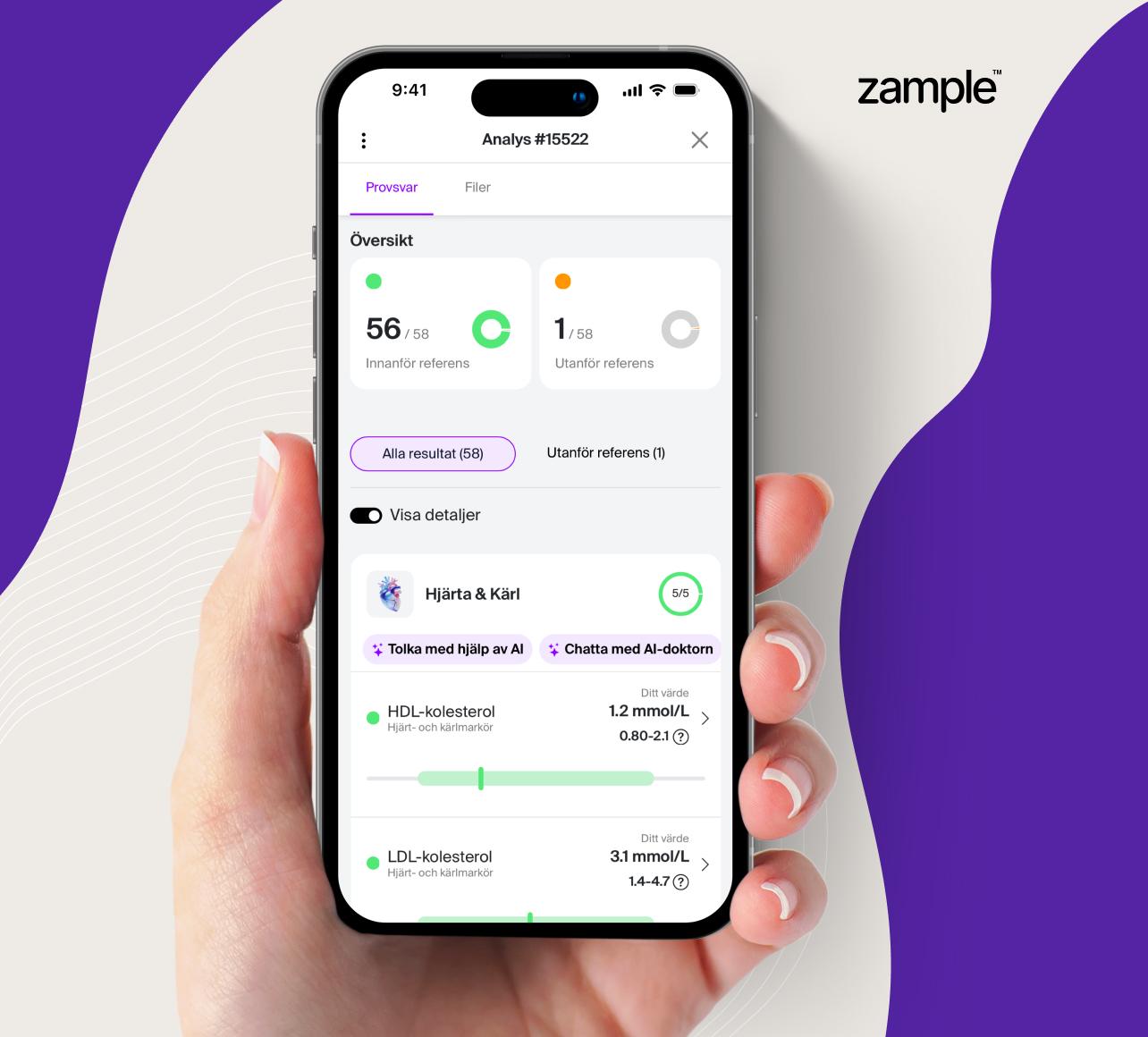LDL cholesterol – Blood test for analysis of “bad” cholesterol
LDL cholesterol (Low-Density Lipoprotein) is often called “bad” cholesterol because it transports cholesterol from the liver to the body’s tissues. If the amount of LDL becomes too high, the cholesterol can start to be stored in the walls of the blood vessels and form so-called plaques. This leads to hardening of the arteries (atherosclerosis), which in turn increases the risk of heart attack, stroke and other cardiovascular disease.
Unlike HDL cholesterol (the “good” cholesterol), which transports away excess fat and cholesterol, LDL has the opposite effect. That is why a high LDL value is considered one of the most significant risk factors for cardiovascular disease. At the same time, LDL is also necessary in moderate amounts – the body needs cholesterol to produce hormones, vitamin D and cell membranes.
One of the most important markers for your lipid profile
LDL is the single most important marker in a lipid profile because it most clearly reflects the risk of atherosclerosis. While total cholesterol and HDL show the whole picture, it is LDL in particular that predicts future cardiovascular disease. Research shows that every reduction in LDL by 1 mmol/L can reduce the risk of heart attack by up to 20–25%.
Therefore, measuring LDL is central – not only for people with known cardiovascular disease, but also for those who want to prevent future risks and monitor the effect of diet, exercise or medication. LDL analysis is often included in a complete lipid profile along with HDL, triglycerides and total cholesterol, but LDL is the most risk-predictive of these markers.
What affects LDL levels?
Several factors can affect LDL levels in the blood, both lifestyle-related and genetic:
- Diet: A high intake of saturated fats, trans fats and sugar can raise LDL levels.
- Genetics: In hereditary high cholesterol (familial hypercholesterolemia), LDL is often significantly elevated already at a young age.
- Hormonal changes: Hypothyroidism (underactive thyroid) and menopause can lead to increased LDL levels.
- Lifestyle: Smoking, lack of exercise, stress and obesity raise LDL and lower HDL.
- Medications and diseases: Certain blood pressure medications, liver diseases, and kidney disorders can also affect cholesterol metabolism.
Why should I measure LDL cholesterol?
Measuring LDL provides important information about your cardiovascular risk and helps you understand how your lifestyle affects heart health. The test is used to:
- Assess the risk of cardiovascular disease.
- Monitor the effect of diet and exercise.
- Evaluate drug treatment for high cholesterol.
- Detect hereditary high cholesterol (FH).
LDL cholesterol should be checked regularly, especially if you:
- Have hereditary high cholesterol or familial hypercholesterolemia.
- Smoke, have high blood pressure or type 2 diabetes.
- Are overweight, have metabolic syndrome or live a sedentary life.
- Have had a heart attack, stroke or angina.
What does a high LDL value mean?
Elevated LDL means that the body has too much cholesterol circulating in the blood. Over time, this can damage the artery walls and contribute to atherosclerosis. It is one of the strongest risk factors for cardiovascular disease – but also a risk you can influence. By lowering LDL levels through diet, exercise, weight control or medication, the risk of serious cardiovascular events can be significantly reduced.
Reference range for LDL cholesterol
LDL should always be interpreted in relation to the rest of the lipid profile and the individual cardiovascular risk. In general, values below 3.0 mmol/L are considered favorable for healthy people, while people with cardiovascular disease or diabetes should often be below 1.8 mmol/L.
| Age group | Lower reference value (mmol/L) | Upper reference value (mmol/L) |
|---|---|---|
| 18–30 years | 1.2 | 4.3 |
| 31–50 years | 1.4 | 4.7 |
How is the blood test done? to?
The blood sample is taken easily via a prick in the arm by trained healthcare professionals. Usually you do not need to fast before the test, but for some investigations a fasting test can give more accurate values. The analysis is performed in an accredited laboratory and is often part of a complete lipid profile together with HDL, triglycerides and total cholesterol.








































